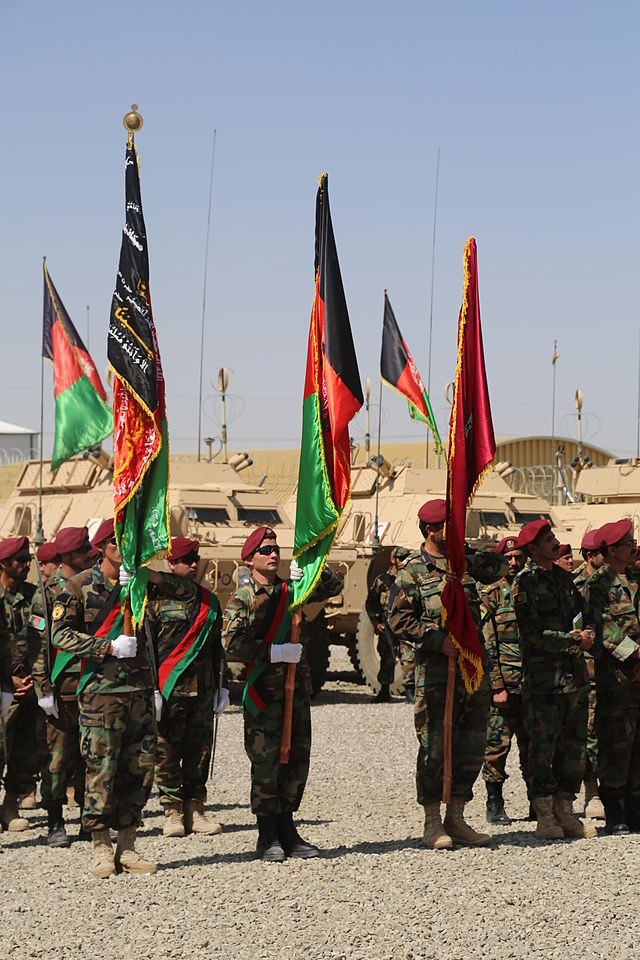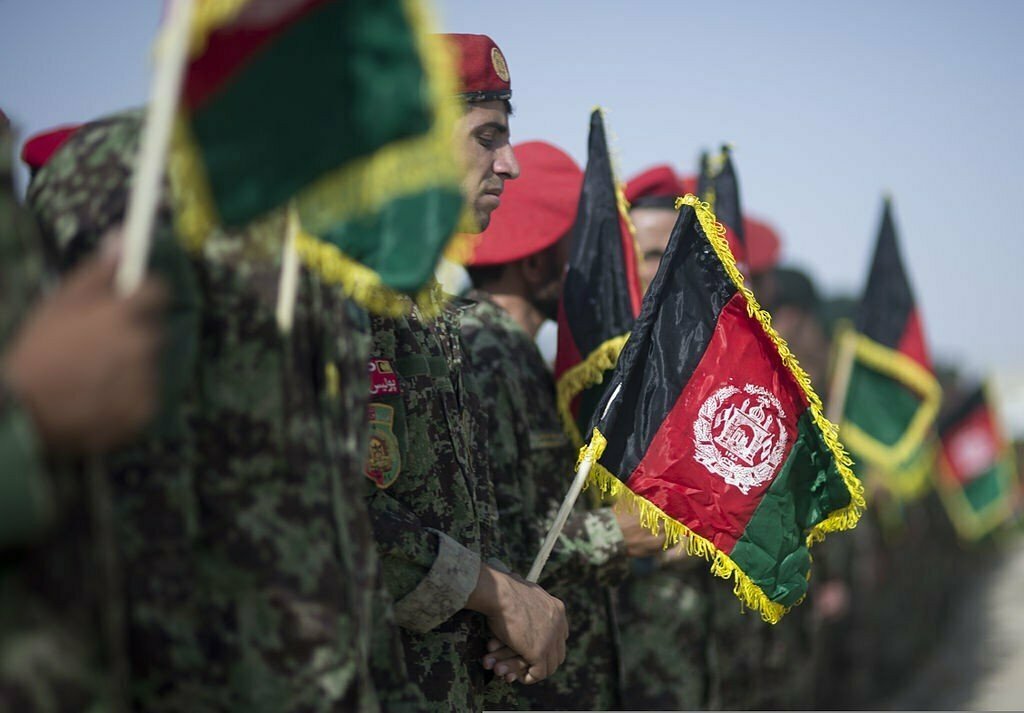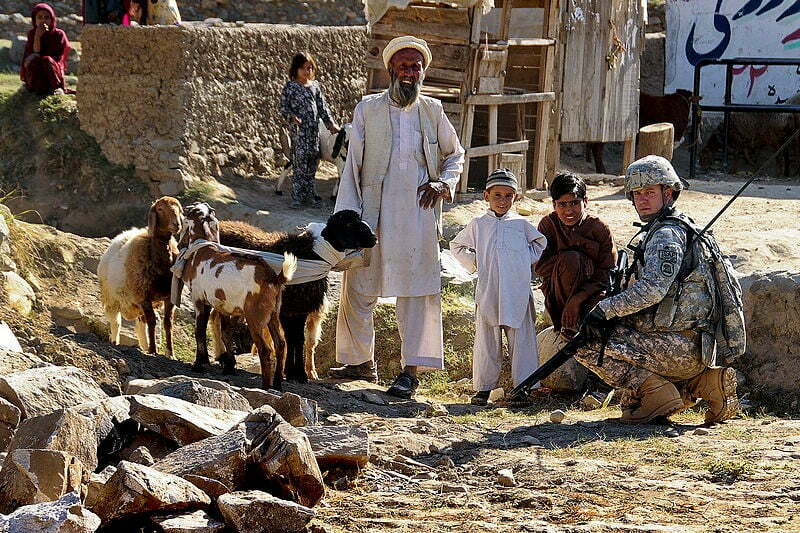
Afghanistan today is on the threshold of history. After nearly a decade of violence and uncertainties, the proud Afghans are optimistic of recreating and rebuilding a new Afghanistan. Would they be able to usher a phase of durable peace and stability in Afghanistan precariously perched on the cusp of violence and tranquility?
It all depends on how the country mired in impoverishment and governance deficit can reign in the Taliban with or without with the help of the international community after the withdrawal of US and NATO forces from its soil. The political transition of the governance apparatus in the country would also require some mature tightrope walking.
The new era could catapult conflict-torn Afghanistan in a new role as a strategic bridge and buffer in the regional development and security. Afghanistan’s geographic centrality makes it a conduit for transportation of trade and energy resources between Central Asia- West Asia and South Asia. Afghanistan can also emerge as a rallying point for the international community to join hands in fighting the scourge of terrorism.
Transformation of a Weak State:
Decades of fighting have totally drained Afghanistan in terms of economic, human resources, development, and governance.
Here are a few key indicators:

The biggest challenge before the National Unity Government in Afghanistan is to transform foreign aided (97 Percent) and poppy driven (50 percent) financial system into a domestically stable and sustainable economy. The Afghan government will have to modernize agriculture and encourage people to grow crops and develop Agro-based industry. Education, health, infrastructure, employment, combating corruption and providing good governance will have to be major thrust areas to lift millions of people from the morass of poverty to dignified living standards.
A US Geological Survey found that Afghanistan has millions of tons of copper, iron ore, and rare earths besides aluminium, gold, silver, zinc, mercury and lithium worth nearly USD 1 trillion. The Afghan government feels the value is around USD 3 trillion. The mineral resources need to be fully surveyed and harnessed. Afghanistan also lacks a rail and road infrastructure to transport these mineral resources.
Hydropower is the main energy source in Afghanistan. However, due to prolonged war, power grids in Afghanistan are badly damaged. Only a third of the population has access to electricity. Afghanistan generates around 600 megawatts (MW) of electricity at present but as per Da Afghanistan Breshna Sherkat (DABS) estimates; the country will need around 3,000 MW to meet its needs by 2020. Afghanistan has 2.9 billion barrels of oil reserves and also produces natural gas. Afghanistan is one of the participants in Turkmenistan–Afghanistan–Pakistan–India (TAPI) gas pipeline.
The Government will have to create an investor friendly climate to attract foreign investors in the mining and other resource sectors. Afghanistan needs a sustained external aid, technical expertise and dedicated commitment from the international community along with efficient management of funds.
Combating Narcotics:
According to a report of Special Inspector General for Afghanistan Reconstruction, released, there has been a 50 percent increase poppy-related proceeds from 2012 to 2013 despite all efforts for poppy eradication. Even Provinces that were once declared poppy-free has seen resurgence in cultivation. Ironically, the production has increased due to use of deep well technology in previously non– arable land. Drug trafficking is the primary source of income for Taliban, warlords and corrupt government officials. Drug addiction has deep roots in the Afghan society where opium is administered to people with pain wherever there is a lack of medical facilities. Narco-terrorism is a serious transnational threat that needs to be addressed collectively by all stakeholders. Central Asia has emerged as an important drug trafficking conduit to Russia and Europe.
Democratic Transition:
Recent elections in Afghanistan have vindicated the people’s faith in democracy vis a vis radical ideology professed by Taliban. The Presidential elections were peaceful; all ethnic groups participated enthusiastically, and the election campaign was inclusive in nature. A record 50 per cent voters cast their ballot, but the voting for the two leading candidates was on ethnic lines, each scoring more that 80 votes in their respective ethnic strongholds. The impending Loya Jirga is likely to endorse the transition from a stable presidency to a representative and participative framework, wherein the Prime Minister will play a significant role in running the government.
The run-up to parliamentary elections in 2015 demands careful handling of the ethnic-regionalism that dominates the Afghan politics. If this experiment of ethnic reconciliation fails or the country plunges into serious ethnic strife, it will be beneficial for the Taliban.
The Afghan Government will have to work overtime to create a power-sharing equilibrium to broaden the roots of democracy and strengthen representative institutions and apparatus in the country. The most important task would be to strengthen the AFNSF and ensure that its rank, structure and cadres do not drift on ethnic lines.
Security Environment:
Taliban and Al Qaeda are a formidable threat not just to Afghanistan but the entire neighborhood. These forces are adherents of a militant Salafi-Wahabi ideology that seeks the creation of aCaliphate, i.e. establishing Nizam e Mustafa (Sharia Law). They are opposed to the concept of Westphalian democratic states and reject the notion of sovereignty of the people. They wish to create the mythical state of Khurasan, encompassing the territory of Caucasus, Central Asia, Xinjiang Province, Af-Pak region, Indian sub- continent. Outwardly, there are a number of Islamist radical groups that appear disparate and divergent in their objectives. Haqqani networks and Hiz e Islami are active in Afghanistan.Tehrik e Taliban of Pakistan (TTP) and Jundullah are fighting the Pakistan Government whereas, groups like Lashkar eTaiba, HizulMujahideen and Jaise Mohamed are protégé of ISI and directed against India.
The Islamic State of Iraq and Al-Sham (ISIS) drawing cadres from the western countries has added a new dimension to the universal Jihadi movement. Al Qaeda is striving hard to retain its leadership in the Pan – Islamist movement by upping the ante. Meanwhile, ISIS has created its appeal in Pakistan, Kashmir, and Afghanistan. A number of Jihadi cadres from this region are training with the ISIS. Some splinter groups of the TTP have already owed allegiance to the ISIS and would be tempted to emulate ISIS brand of Jihad in the Af- Pak region. The Jihadi outfits may pursue different tactical objectives, but are united in their overall ideological goal of creating a Caliphate. Their Pan Islamist outlook propels them to forge alliances in favor of their larger religious cause.
The failure to contain resurgent Taliban and other Jihadi outfits will have grave consequences for the Af- Pak region. All this can emboldened the Jihadists, escalate violence in Kashmir, push India- Pakistan towards a military confrontation, heighten the risk of nuclear terrorism and scuttle the Turkmenistan-Afghanistan-Pakistan–India pipeline. Defeat of Taliban in Af-Pak region is a ‘sine qua non’ for regional security. More pertinent in this regard is the role of Pakistan, which has thus far, used these non-state actors as instrument of state policy to pursue its flawed security agenda against India and Afghanistan. It is high time Pakistan realizes that chickens have come home to roost. Today, the Pakistan Government has come to regard Jihadi violence as a threat to its national security and has embarked upon a counter-insurgency campaign named Zarb e Ab in Waziristan albeit with limited success. However, its policy of supporting Haqqani network and anti-India militant groups has not tangibly changed. It is time that Pakistan changes its mindset and sheds duplicity in dealing with different militant outfits differently.

